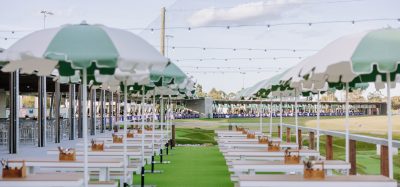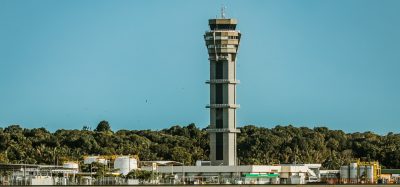Flying to the future of aviation with SAF
Posted: 17 July 2024 | Holly Miles | No comments yet
Firefly Green Fuels has announced a novel pathway to sustainable aviation fuel, made from sewage sludge. International Airport Review finds out more.
On Thursday 11 April, 2024, International Airport Review was invited to attend a press event in London, where Bristol-based Firefly Green Fuels announced, alongside its partners, significant progress towards commercialisation of their novel SAF pathway. The companies will unite to transform sewage sludge (also known as biosolids) into sustainable aviation fuel (SAF) at a plant to begin construction in the UK later this year.
Firefly Green Fuels has secured a roster of partnerships to make this happen though MOU agreements signed with key industrial partners including Haltermann Carless, Petrofac, Chevron Lummus Global (CLG) and Anglian Water.
Join our free webinar: Revolutionising India’s travel experience through the Digi Yatra biometric programme.
Air travel is booming, and airports worldwide need to move passengers faster and more efficiently. Join the Digi Yatra Foundation and IDEMIA to discover how this groundbreaking initiative has already enabled over 60 million seamless domestic journeys using biometric identity management.
Date: 16 Dec | Time: 09:00 GMT
rEGISTER NOW TO SECURE YOUR SPOT
Can’t attend live? No worries – register to receive the recording post-event.
Collaboration
Haltermann Carless, a sustainable hydrocarbon production specialist, is the owner of a dedicated refinery site in Harwich, Essex, where Firefly will soon start building a pilot facility, followed by a planned first-of-a-kind commercial-scale plant shortly thereafter. They aim to be producing SAF by 2028/29.
Chevron Lummus Global (CLG), a technology provider in the renewable transportation fuels industry will provide bespoke refinery infrastructure, which will help Firefly minimise emissions for their commercial-scale plant and promote flexibility.
Utility company Anglian Water will provide Firefly with the human waste that forms the feedstock of the sustainable aviation fuel.
Wizz Air has entered into an offtake agreement with Firefly with a value of nearly $1 billion across 15 years and will purchase over half a million tonnes of SAF.
Why SAF?
Hydrogen has been heralded as the fuel of the future, however there is still a long way to go before hydrogen will be available. “SAF is the tool that we have in our hands now,” said Paul Hilditch, Firefly Chief Operating Officer and Co-Founder, speaking at the event.
However, there are a few issues standing in the way of SAF uptake:
- There is currently nowhere near enough SAF to fulfil our needs.
- It is too expensive, and costs on average around 2.5 times more than the cost of conventional jet fuel.
Supply and affordability are what Firefly say they are addressing and the SAF that they produce is said to be chemically indistinguishable from jet fuel.
Why human sewage?
Speaking at the London press day, Paul Hilditch, Firefly Chief Operating Officer and Co-Founder, said:
“Human sewage is the cheapest and most abundant feedstock. The average human produces 30kg of waste in a year. There’s enough biosolids in the UK to produce more than 200,000 tonnes of SAF and that’s enough to satisfy around half of the mandated SAF demand in 2030. There are enough biosolids in the world to produce 14 billion litres of sustainable aviation fuel. Anywhere where there is a water treatment plant that can produce biosolids, then there is potential for a SAF plant there. We like biosolids because there is lots of it, they are biogenic which means there is no fossil carbon and unlike other SAF feedstocks – it has no value. Biosolids are most often sent to landfill or incinerated.”
James Hygate, CEO of Firefly who says they are “changing the world, one stool at a time,” sees the potential to build three facilities across the UK.
Changing the world, one stool at a time!”
“The commercial refinery should be able to produce fuel by 2028/29 and will be designed to produce 100,000 tonnes per year of sustainable fuel, half of which is SAF.
“The cost with biofuels is all around the feedstocks, and this feedstock is pretty inexpensive. Can we reach parity with fossil jet? With incentives, we believe we can within the next decade.”
Speaking exclusively to International Airport Review, Yvonne Moynihan, Corporate & ESG Officer at Wizz Air, said: “We’re excited about it because the feedstock is low-cost, it’s very abundant and it’s biogenic, so there’s no competition with food.
“The cost of production is also quite low compared to other feedstocks. And for us, we’re very much cost-driven as a low-cost airline business, so the merging of low-cost feedstock and low-cost operations is something that makes a lot of sense to us.
“So, in terms of the cost, we have put equity into SAF because we can have better control and strategically place ourselves in front of the evolving dynamics of market supply and demand.”
When asked about whether the airline had been given any assurances over the price of the SAF, Moynihan replied: “There will be a ceiling. Of course, there is no clear pricing in the future right now, but we have mechanisms for certainty which will be involved. And because of that, we’re hoping that the ramp up in production of SAF will ultimately lead to lower cost of production.
“Even though the cost will not be on par with the cost of Jet A-1 fuel, it will be close to it, and there will be certain incentives where we can offset or mitigate the use of SAF. There will be some carbon cost savings that we can achieve from the use of SAF as well due to allowances obtained through legislation. Therefore, with that in mind, our aim would be not to pass the cost on to the customer. That’s not part of our business model.”
This venture capitalism equity investment with Firefly and another company in the U.S. called CleanJoule, plus agreements with other fuel providers such as CEPSA, Neste and OMV, are central to Wizz Air’s ambitions to mainstream SAF.
Moynihan continued: “For us, SAF is the holy grail of decarbonisation and it’s definitely for aviation. It’s the easiest solution in the short-term because as it’s a drop-in fuel, there’s not a huge amount of infrastructure change needed.”
“For us, SAF is the holy grail of decarbonisation and it’s definitely for aviation. It’s the easiest solution in the short-term because as it’s a drop-in fuel, there’s not a huge amount of infrastructure change needed.”
On 11 April 2024, Wizz Air announced that it aspired to power 10% of its flights with SAF by 2030.
It seems that Wizz Air fully intends to keep its spot as the world’s most sustainable airline.
Stay Connected with International Airport Review — Subscribe for Free!
Get exclusive access to the latest airport and aviation industry insights from International Airport Review — tailored to your interests.
✅ Expert-Led Webinars – Gain insights from global aviation leaders
✅ Weekly News & Reports – Airport innovation, thought leadership, and industry trends
✅ Exclusive Industry Insights – Discover cutting-edge technologies shaping the future of air travel
✅ International Airport Summit – Join our flagship event to network with industry leaders and explore the latest advancements
Choose the updates that matter most to you.
Sign up now to stay informed, inspired, and connected — all for free!
Thank you for being part of our aviation community. Let’s keep shaping the future of airports together!
Related topics
Green energy, Sustainability, Sustainable Aviation Fuel (SAF), Sustainable development
Related airlines
Related organisations
Anglian Water, CEPSA, Chevron Lummus Global (CLG), CleanJoule, Firefly Green Fuels, Haltermann Carless, Neste, OMV, Petrofac

















